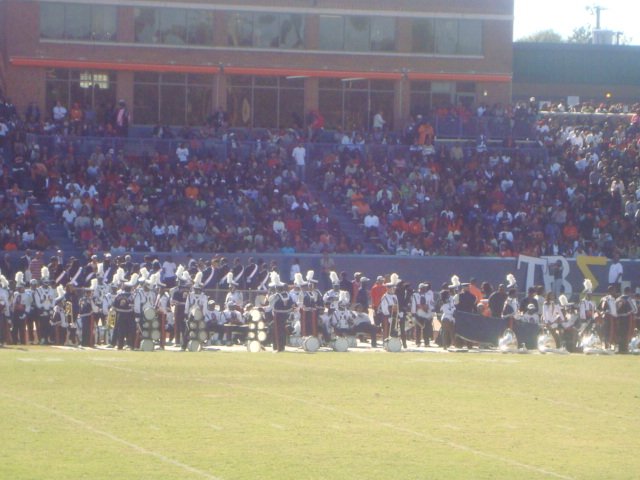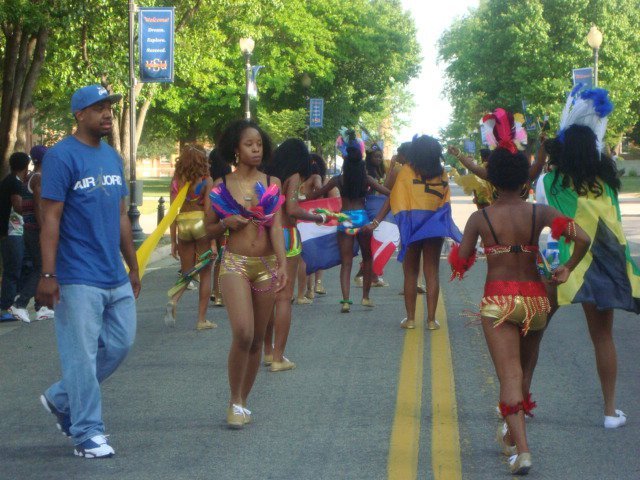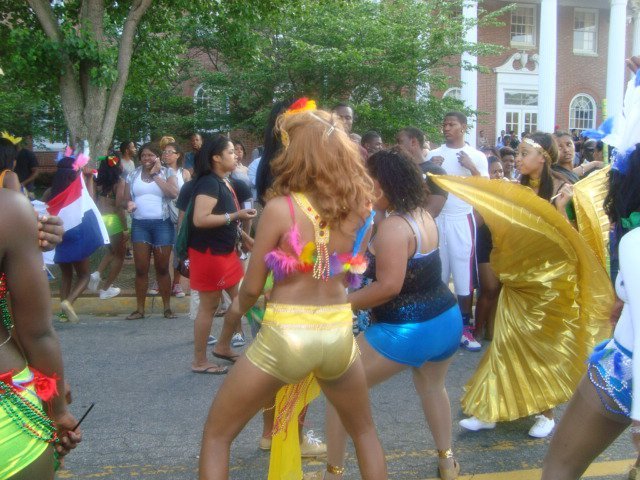by Flisadam Pointer
Homecoming. By definition, it’s the “instance of returning home.” In the United States, the word represents the longstanding tradition of alumni returning to their high schools or colleges to celebrate. Homecoming week and weekend often find students, educators, and alumni alike participating in parades, attending tailgates, celebrating at parties, and cheering at games. At Historically Black colleges and universities, those events are enhanced by the celebration of school spirit and Blackness that not only plays a part in the enjoyment of the entire celebration but also in the success of an artist’s career: the homecoming concert.
Growing up just outside of New York City had a lot of perks. It’s the number one media market, with dozens of legendary music venues just a short train ride away and three of the most prominent urban radio stations on my dial constantly spinning the most popular acts in rap.
Whether I was trucking it into the city to sneak into a taping of 106 & Park after school, grabbing student discount tickets to a critically acclaimed musical on Broadway, or attending a special one-night-only concert featuring one of rap’s biggest names, as long as I had the money I could go. As a result, I always knew what was hot.
When it was time for me to go off to college I eagerly packed up my belongings for the nearly eight-hour drive to Virginia State University (VSU), an HBCU in Petersburg, Virginia. I daydreamed about what the southern live rap music scene had to offer me, hoping it would rival that of my childhood right out of the city. Upon arrival at VSU, I sadly realized the answer was nothing. The school, located 20 or some odd miles outside of the capital, was the complete opposite of the musical environment I had been accustomed to back home. There were no major venues in town and the nearest major city, Richmond, ranked 56th in the media market. rap artists viewed this area as an afterthought when it came to touring. It wasn’t until the whispers about homecoming week began to make their way around campus that I realized my historical Black university had something so much more special to offer me as an avid music lover: the homecoming circuit.
My VSU ID card.
The groundwork had been laid for my magical homecoming experience long before I applied for college. A few months after his performance at Summer Jam in 1995, The Notorious B.I.G. traveled down to Washington, D.C. to perform at Yardfest, the outdoor concert held during Howard University’s homecoming. Alongside him? Foxy Brown, Biz Markie, and Bad Boy label owner and former Howard student Diddy. A few years later Roc-A-Fella descended on the university, with Jay-Z, Memphis Bleek, and Beanie Sigel taking the Yardfest stage to perform some of their biggest hits. In 2001 the Howard homecoming celebration saw the return of Foxy Brown as well as performances from DMX and Capone and Noreaga, and the introduction of a reggae concert headlined by Beanie Man. Big names didn’t just descend on Howard’s homecoming celebration. Schools like Lincoln University in Pennsylvania, for example, saw homecoming performances by big names in rap like Big Daddy Kane, Chill Rob G, EPMD, and De La Soul in the 90s and beyond. Homecoming wasn’t just a place for these artists to perform, it was a place for them to connect with the Black students who contributed to and could further propel them to success.
Before Rolling Loud, Broccoli City, Power 105.1’s Powerhouse, Something in the Water, Roots Picnic, and Day N Vegas, there was only Hot 97’s Summer Jam. Law enforcement's criminalization of rap music effectively made it more difficult for the genre’s newer acts to get booked on a grand scale. From overt harassment of the acts playing large venues seen in tour bus raids which often results in unjust detainment, or enforcing noise ordinances to shorten the length of performers' sets, promoters found-and still do find-themselves walking a financial tightrope. In Mark Anthony Neal’s “What the Music Said: Black Popular Music and Black Public Culture,” he notes that “insurance industry had a particularly compelling impact by raising venue insurance rates for hip-hop concerts in relation to the public paranoia associated with hip-hop performances, in effect making the promotion of such events a distinct financial risk.”
As rappers dreamt of the Summer Jam stage, prior to 2013, when non-local acts were granted the opportunity to play Festival Village (the festival’s official pre-show originally founded in 2004), without massive popularity on the artist’s part, playing the main stage was not even an option. This is where the HBCU homecoming circuit comes into play.
With students like myself miles away from home, homecoming week allowed us to learn from all of the unique regional cultures and discover new acts. My first homecoming was in 2010 at the height of hip-hop’s “blog era.” On the concert lineup, names included Big K.R.I.T. and Wale. While both artists already had a few projects under their belt by the time the VSU homecoming concert rolled around, their performances allowed them to “work” their material for the crowd as well perform for an audience that could, and would, further catapult them to success. The following year Wale signed to MMG, and two years after the show K.R.I.T. released his debut studio album, Live from the Underground, which debuted at number five on the Billboard 200 chart. In the years that followed, artists like Rico Nasty and Megan Thee Stallion would hit the VSU homecoming stage to perform, with Rico going on to snag a Forbes 30 under 30 slot and a Gold-certified record, and Meg landing two number-one singles on the US Billboard Hot 100 and three Grammys.
Here is what a few HBCU alums had to say about their homecoming experiences:
Melody Asherman graduated from Tuskegee University and currently works as a fashion designer. She attended a total of eight homecomings, her favorite years being 2006, 2010, and 2015. “[Homecoming 2006] because that was my first and 2010 [because] I hosted the concert on the yard. Future is one of my favorite rap artists. In 2015, he headlined the convent. His energy is unmatched! He had the entire auditorium on 10! I had to go see him in concert after that!”
Freelance writer Markayla Brooks, a 2020 graduate of Clark Atlanta University (CAU), has attended a total of seven homecomings between her alma mater and neighboring colleges, Spelman and Morehouse. “Homecoming culture is an unmatched experience,” she says. “I always went to the R&B concert for Spelhouse. They had Ella Mai, Jazmine Sullivan, and Jacquees. My HBCU is in Atlanta [so] any celebrity could be on campus any given day. Morehouse had Hump Wednesday [a weekly party hosted around the campus that features games and, at times, music performances], and they had rappers like G Herbo and the Migos.”
Journalist Ariyana Griffin, also a graduate of CAU, has attended both her school’s homecoming and the Spelhouse activities. Despite the global pandemic being a damper on her college experience Griffin was able to attend a few homecomings, describing them as “similar to a family reunion.” The most memorable homecoming for her was “Clark Atlanta’s in 2022,” which saw appearances from Saucy Santana, Asian Da Brat, G Herbo, and Lil Baby. The official recap video curated by Streetz 94.5 radio personality Fly Guy DC has racked up hundreds of thousands of views on YouTube. She says, “It was one of my best memories, especially being a senior. I really enjoy the concerts because at least at Clark’s, they allow students to perform and open for the celebrities, so it also gives them a major opportunity, and it also opens the student body up to new music from our peers.”
From its birth in 1520 Sedgwick Avenue’s recreation room in 1973 to today’s TikTok trends launching the careers of so many of today’s biggest names and historically Black colleges and universities stamping who the next big live act will be, Black youth have and will forever be the tastemakers of hip-hop music. Just as homecoming is a right of passage for the students, it also serves the same purpose for the current era’s acts.





